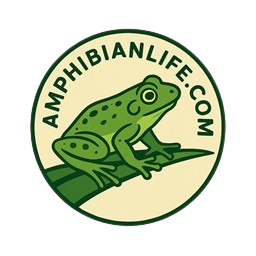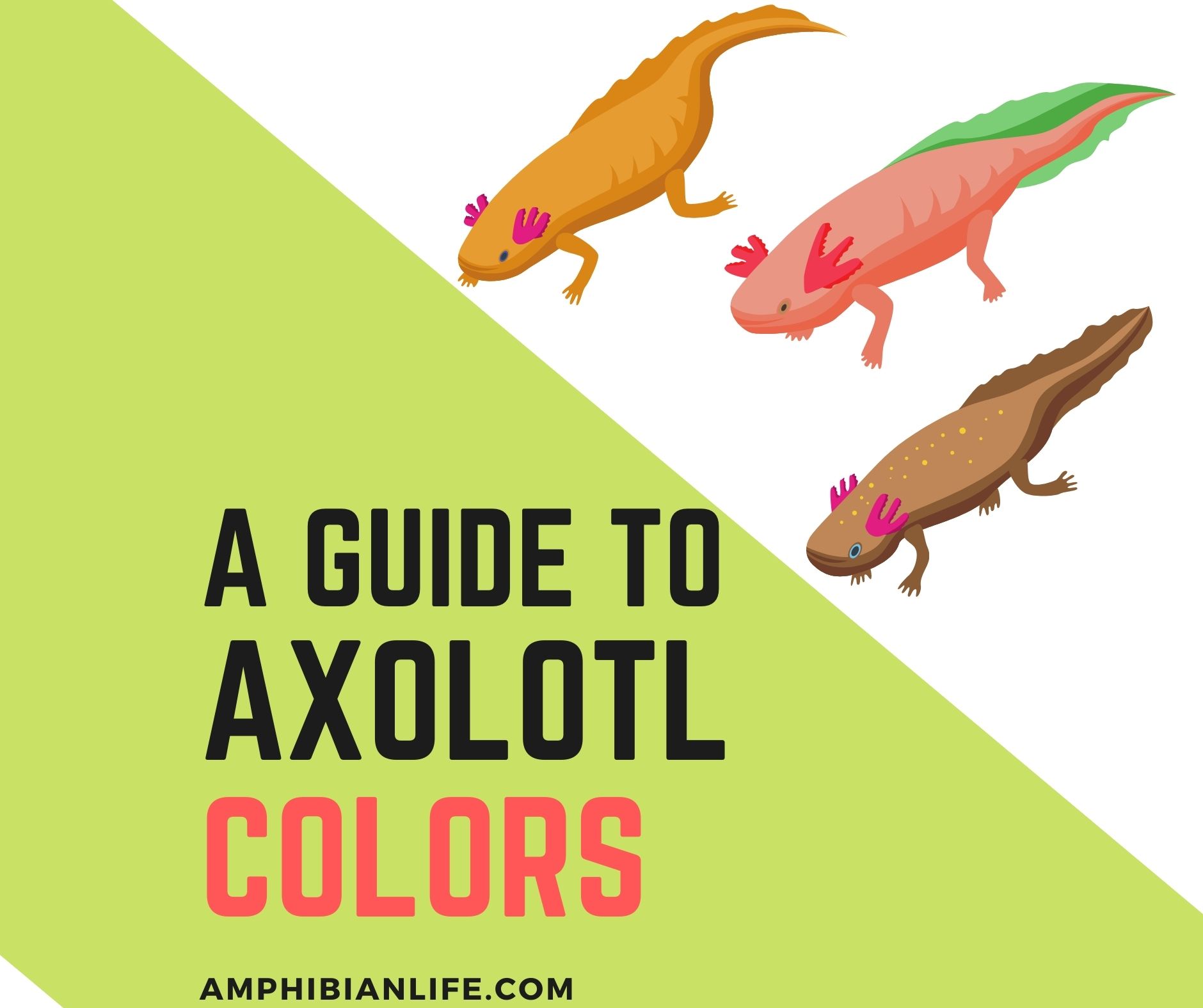
Overview of Axolotl Color
Do axolotls come in many colors? The simple answer is Yes, Axolotls come in many colors, these colors are either natural or artificially induced through crossbreeding. and their selection is a personal preference.
So, Being a beginner or Enthusiast you may be wondering, What colors do Axolotls come in? Which color is the best? Why do axolotls have many colors? Is Albino axolotl good for a beginner? What is the most common Axolotl color?
In this article, we will discuss Various Axolotl Morphs and Colors; and which ones you should own.
However, I recommend only natural color axolotls as they have better resistance and longevity as compared to artificial ones.
How Many Types of Axolotls Are Available?
Technically Speaking, There is NO Fixed amount of color patterns for this amphibians species.
In the wild, you can typically see tanned or brown or axolotls with some golden flares or a greenish overlay.
The color variations in lab conditions result due to smart genetic engineering and we can see many mutants or morphs.
Nevertheless, Mutant morphs are in higher demand than naturally patterned axolotls among aquarists and Pet Enthusiasts.
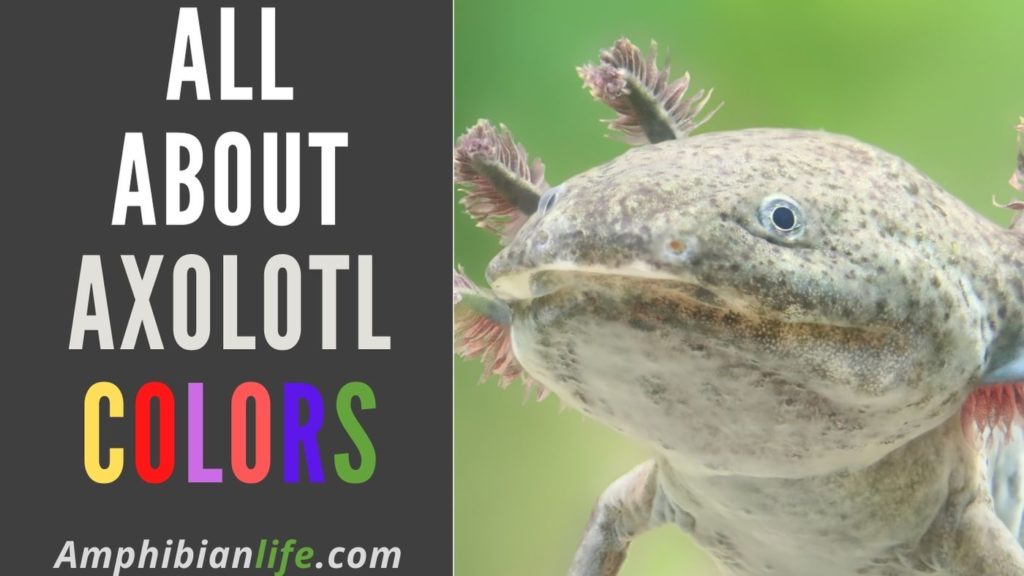
20 Best Axolotls Colors (Common and Rare Morphs)
Below we have classified Axolotls Colors based on Basic, Specials, and Rare Morphs.
- Wild Type Axolotl
- Golden Albino Axolotl
- Mosaic Axolotl
- Lavender Axolotl
- White Albino Axolotl
- Chimera Axolotl
- Firefly Axolotl
- Enigma Axolotl
- Copper Axolotl (Het Copper and Light Copper)
- Leucistic Axolotl (Lucy)
- Piebald Axolotl (Dirty Lucy Morph)
- Silver Dalmatian Axolotl
- Melanoid or Black Axolotl
- Speckled Leucistic Axolotl (Dirty Lucy)
- Heavily-Marked Melanoid
- Axolotl Green or GFP (Green Fluorescent Protein)
Axolotls Color Table
| Basic Axolotl Morphs | Special Axolotl Morphs | Rare Axolotl Morphs |
| Wild Type – Black or Dark-colour | GFP or Axolotl Green | Chimera Axolotl |
| Leucistic or lucy– Pink or Pale white | Copper Axolotl | Piebald Axolotl |
| Gray or Silvers (Axanthic) | Enigma Axolotl | |
| Albino Axolotl (Xanthic) | Mosaic Axolotl | |
| Albino – Golden or White | Silver Dalmatian | |
| Melanoid – Pitch Black or Dark Gray | Firefly Axolotl |
(Common or Mutant Morphs)
- Wild Type – Black or Dark-colour
- Leucistic or lucy – Pink or Pale white
- Albino – Golden or White
- Axanthic – Gray or Silvers
- Albino Axolotl (Xanthic)
- Melanoid – Pitch black or Dark Gray
(Uncommon Morphs)
- GFP or Axolotl Green
- Copper Axolotl
(Extremely Uncommon Morphs)
- Chimera Axolotl
- Silver Dalmatian
- Lavender Axolotl
- Piebald Axolotl
- Enigma Axolotl
- Mosaic Axolotl
- Firefly Axolotl
Genetics Behind Axolotl Colors
The color genetics of axolotls are made up of three chromatophores (pigmentation cells) and a mutation that can occur during the development of melanophores:
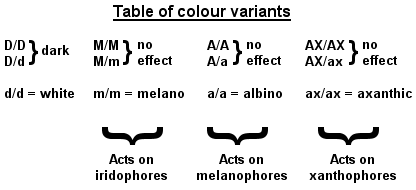
- Melanophores (A):
They contain dark pigments, eumelanin, and melanin (brown and black) - Xanthophores (AX):
They contain yellowish pigments, carotenoids, and pterins - Iridophores (M):
They contain iridescent purine crystals and reflectors of light - Non-uniform distributed pigmented cells (D):
This factor causes a non-uniform distribution of melanophores and is therefore responsible for the leucistic color
On the surface genetics is simple – but it’s never as easy as it should be.
D genes control the 'base' color of an axie, D/- = dark, d/d = white A genes control albinism, A/- = non albino, a/a = albino M genes control iridophores, M/- = iridophores, m/m = no iridophores (melanoid) AX genes control xanthaphores (yellow spots) AX/- = yellow, ax/ax = no yellow Source: caudata
Each gene has 3 sections that code for the 3 chromatophores (Check the table below)
Type of Chromatophores Cell Table
| Chromatophore Type | Pigment | Color Morph |
|---|---|---|
| Melanophores (A) | Eumelanin+Melanin | Brown and Black |
| Xanthophores (AX) | Carotenoids and Pterins | Yellow and Red |
| Iridophores (M) | Iridescent Purine Crystals | Shiny Reflectors |
Gene basically manages the formation of each type of cell without influencing the other.
They are either dominant (noted with an uppercase letter, or for example A), or recessive (noted with a lowercase letter, or for example a). Each dominant or recessive formation is either homocygous (eg A / A or a / a) heterocygous (eg A / a).
It differs only in the degree of distribution of pigmented cells determined by developmental d / d mutation.
Some hypotheses are circulating, but genetic analysis of this phenotype has so far not been carried out.
The chimera is a special case, as we have already mentioned elsewhere. It consists of two fused eggs.
A priori, any egg can fuse with any other egg, so a priori a chimera can have any genotype
(as long as it has a different one per side of the body, otherwise, it would not be a chimera).
What Colour Axolotls can you get? How to Pick the Right Color?
The common Axolotl has 5 colors respectively. Wild, Leucistic (pink), White Albino, Golden, and Melanoid.
Some also refer to them as Pink (leucistic usually referred to as “lucy”), brown (wild), yellow, cyan, and blue.
The color of Axolotls is due to pigmentation of the skin, and their selection is a personal preference.
Fun Fact : Can Axolotls change color?
The simple answer is yes they can. By increasing blood flow in their body. Some axolotls also change color as grow up.
Many wild types of axolotl darken over time and end in dark black which is completely different from the original color.
Natural Colors in Axolotl
Basic/Common Axolotl Morphs or Mutant Morphs
Fauve or Wild Axolotl
Grey-brown, sometimes with a greenish tint, The majority of the wild axolotls in Lakes Chalco and Xochimilco have this color.
The name “Sauvage” is linked to the original color of the Axolotls in their natural environment, but it doesn’t mean Axolotl was taken from nature. To avoid this confusion, some prefer to use the term “Fauve“.
A “Wild” or “Fauve” Axolotl is brown in color, which may tend towards grey or green, and spotted with black. Shades can range from lightest to darkest.
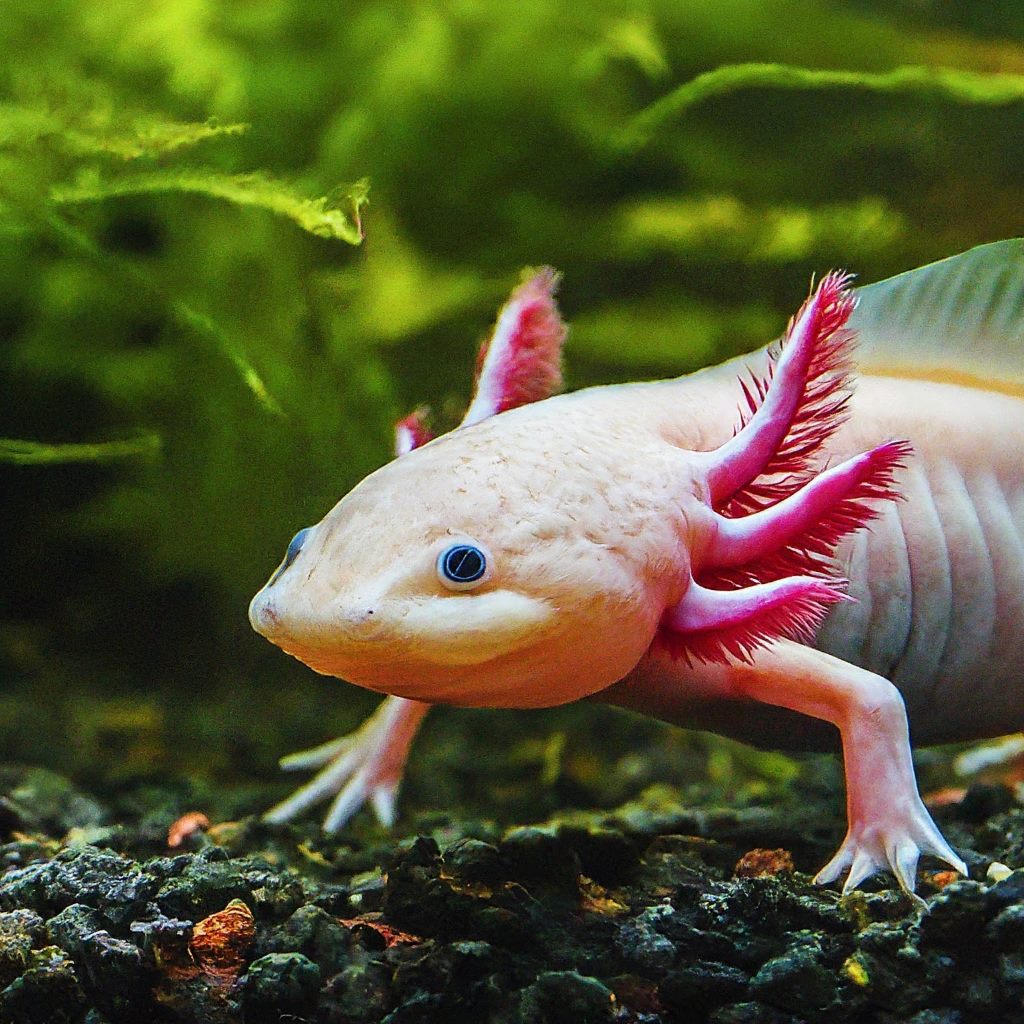
Leucistic (Pink) Axolotl
Also found in the wild, this animal is white or slightly pink with black eyes.
Despite its light color, the leucistic axolotl is not albino. Otherwise, he wouldn’t have black eyes, but red eyes.
This is because there is no natural albino form in Axolotl, Existing albinos are created by humans, by hybridizing the Axolotl with the Tiger Salamander.
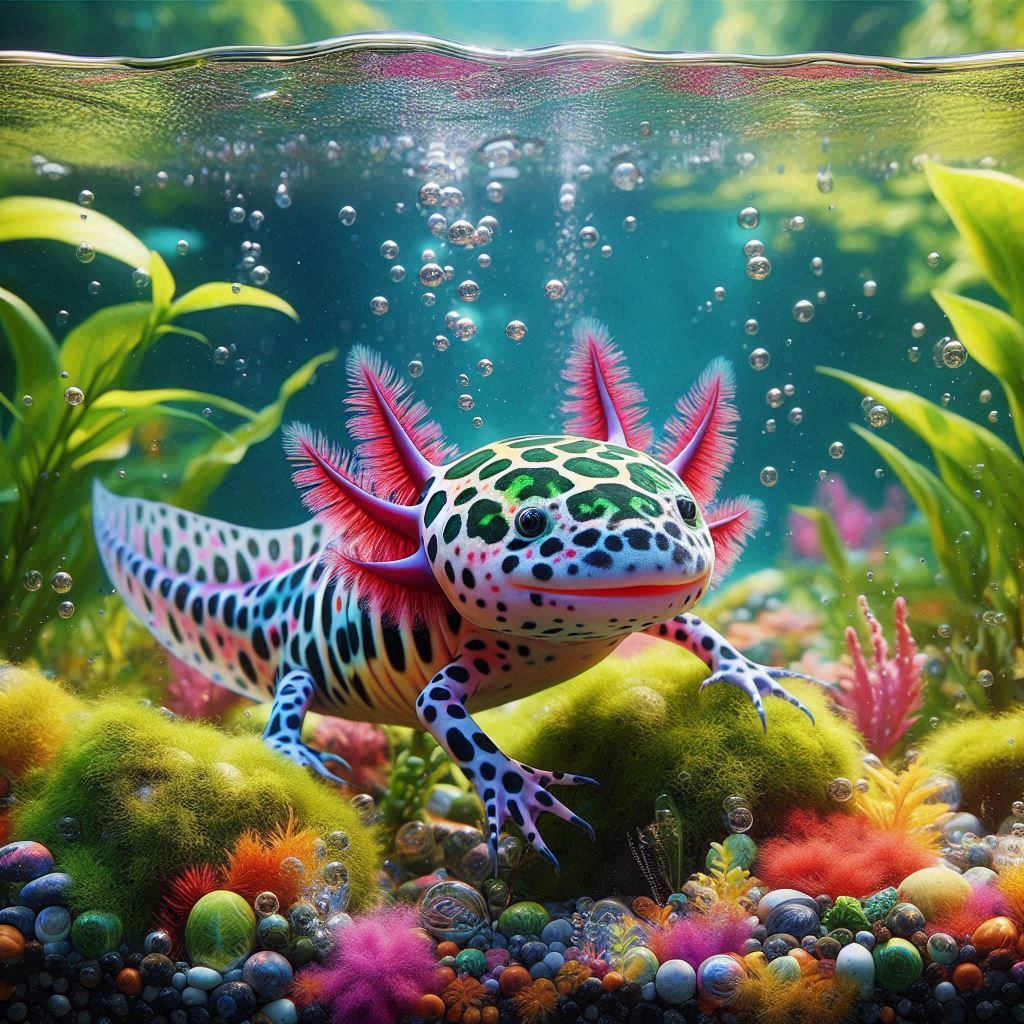
Harlekin Axolotl Kaufen
Harlekin is quite simply a more pigmented leucistic. While in the leucistic, the pigments did not go further than in the eyes, in the harlekin, they are distributed in different ways on the head, gills, even on the back, but never on the whole body.
So it is a spotted leucistic in different ways. The classic harlekin is white with a more or less blackhead.
Harlequin Axolotl
Harlequin axolotl is hard to recognize, as they are often confused between piebalds.
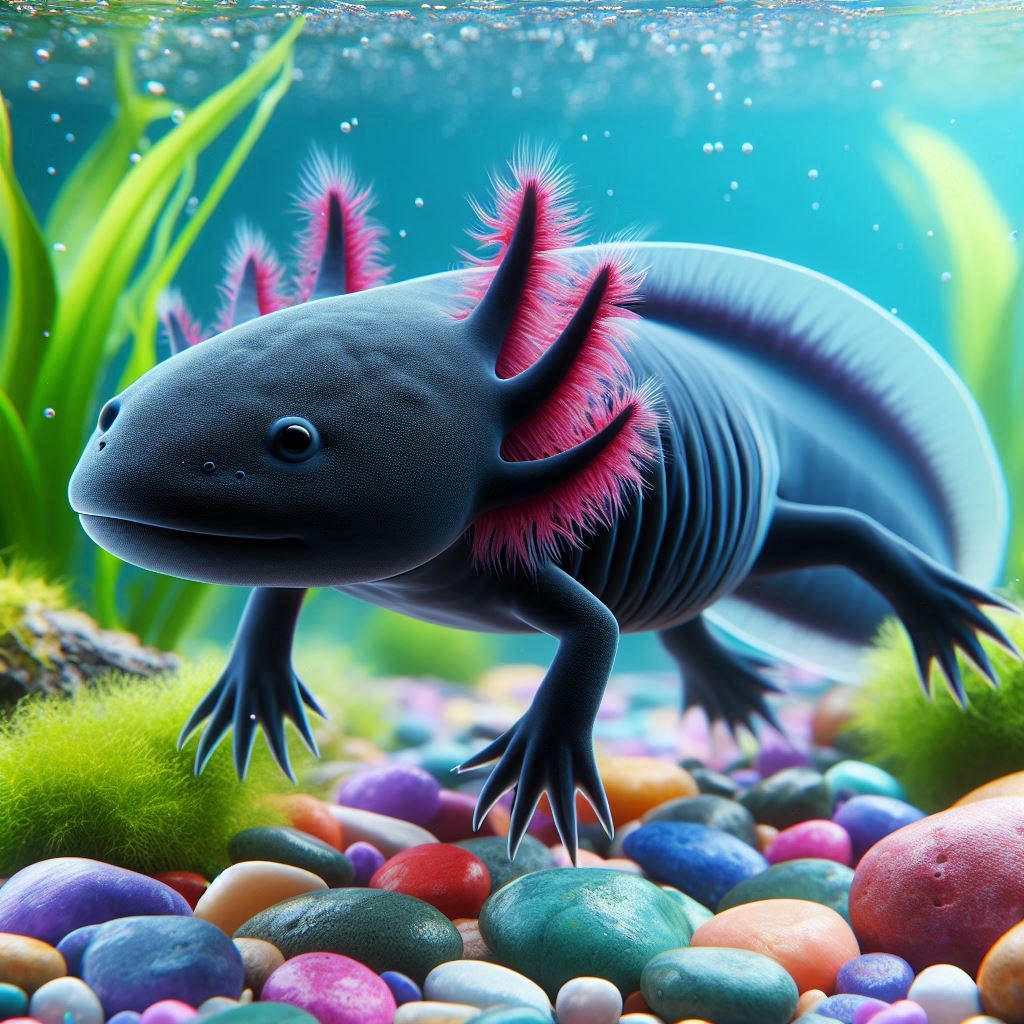
Melanistic/Melanoid Axolotl
A melanistic Axolotl or Melanoid Axolotl can be black, fawn, white, grey, or albino (gold or white).
Its genotype is characterized by the absence of iridophores. therefore, means no bright reflections on the body or the gills.
The surest way to tell a melanic is to look them in the eye: a melanistic axolotl does not have a golden circle around the pupil.
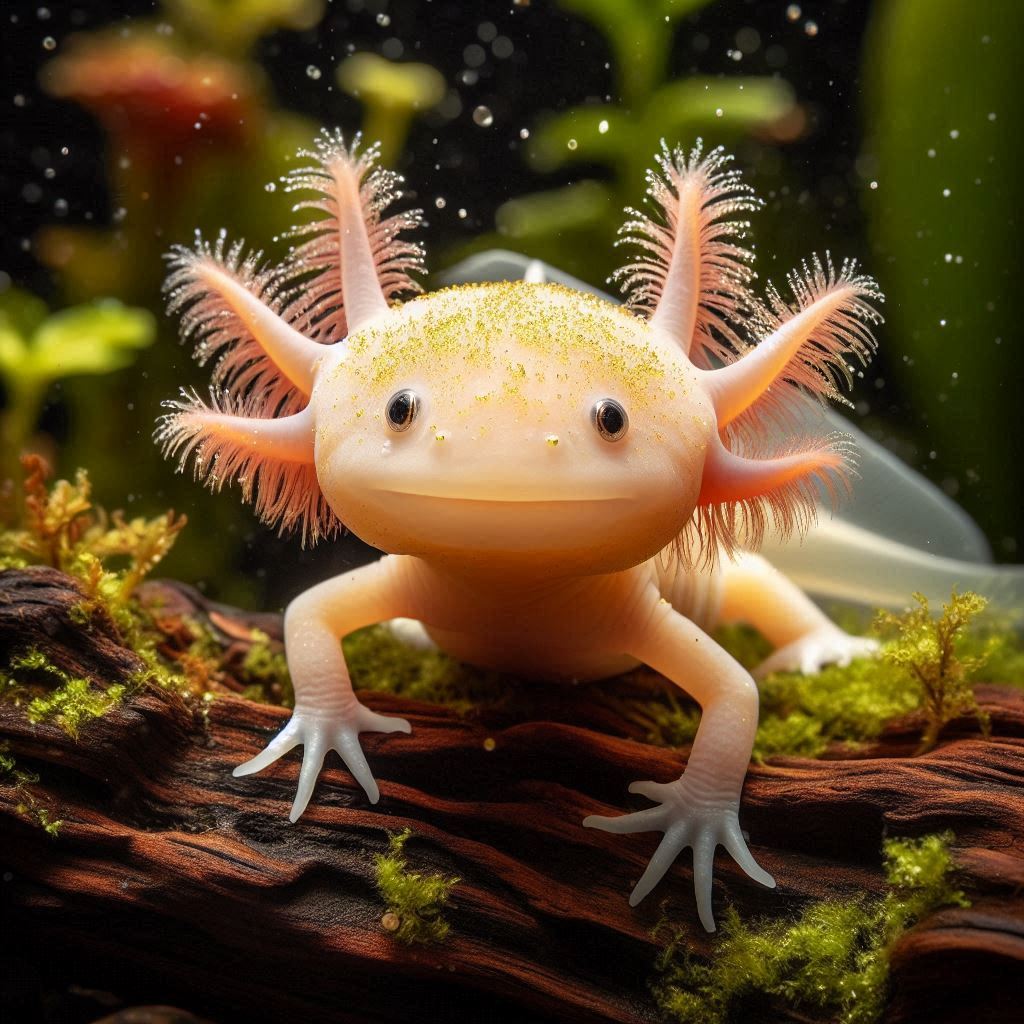
Golden Axolotl
Originally derived from hybridization between a female Ambystoma tigrinum albino (Tiger Salamander) and a male Ambystoma mexicanum (Axolotl), Humphrey (1967) created Humphrey’s Axolotl.
This hybrid is very common. He’s an albino, he has yellow eyes. Its genotype (its genes) does not contain melanophores. This color can have all shades from very yellow to white.
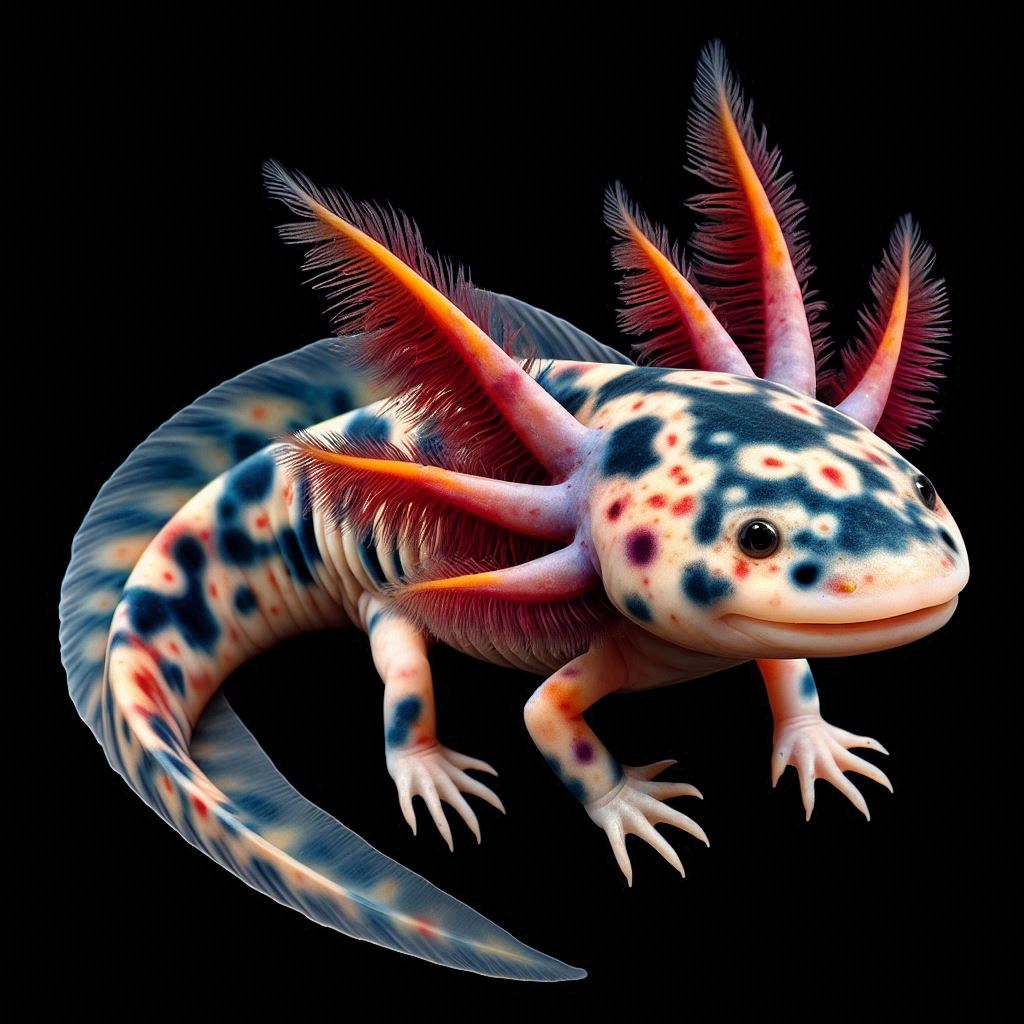
Chimera Axolotl
Melanophores chimera Axolotl An absolutely extraordinary animal in every sense! It doesn’t really fit into either category.
While it is a prior possibility that it appears in the natural environment, nobody has seen it yet, but theoretically,
it is quite possible since these are two embryos that have fused in one. The coloring of the chimera is not hereditary.
Chimerism in axolotls occurs when two eggs fuse together in early development and each side grows according to the egg,
However, one side can often grow at a slightly slower rate than the other, these cannot be duplicated while breeding.
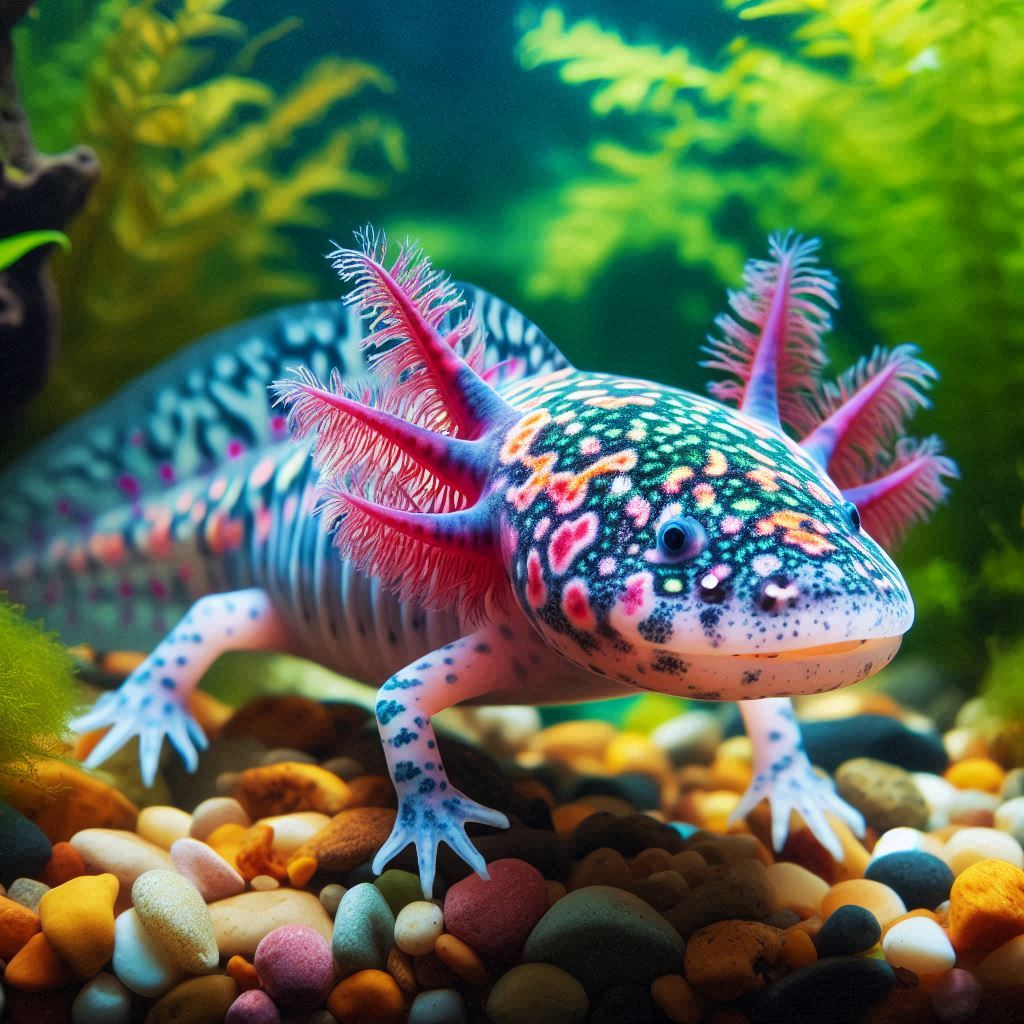
5) Mosaic Axolotl
An Axolotl Mosaic is the result of the mutation of cells during the division of the embryo. Axolotl exhibits the two-cell phenotype all over the body.
Special and Uncommon Axolotl Morphs
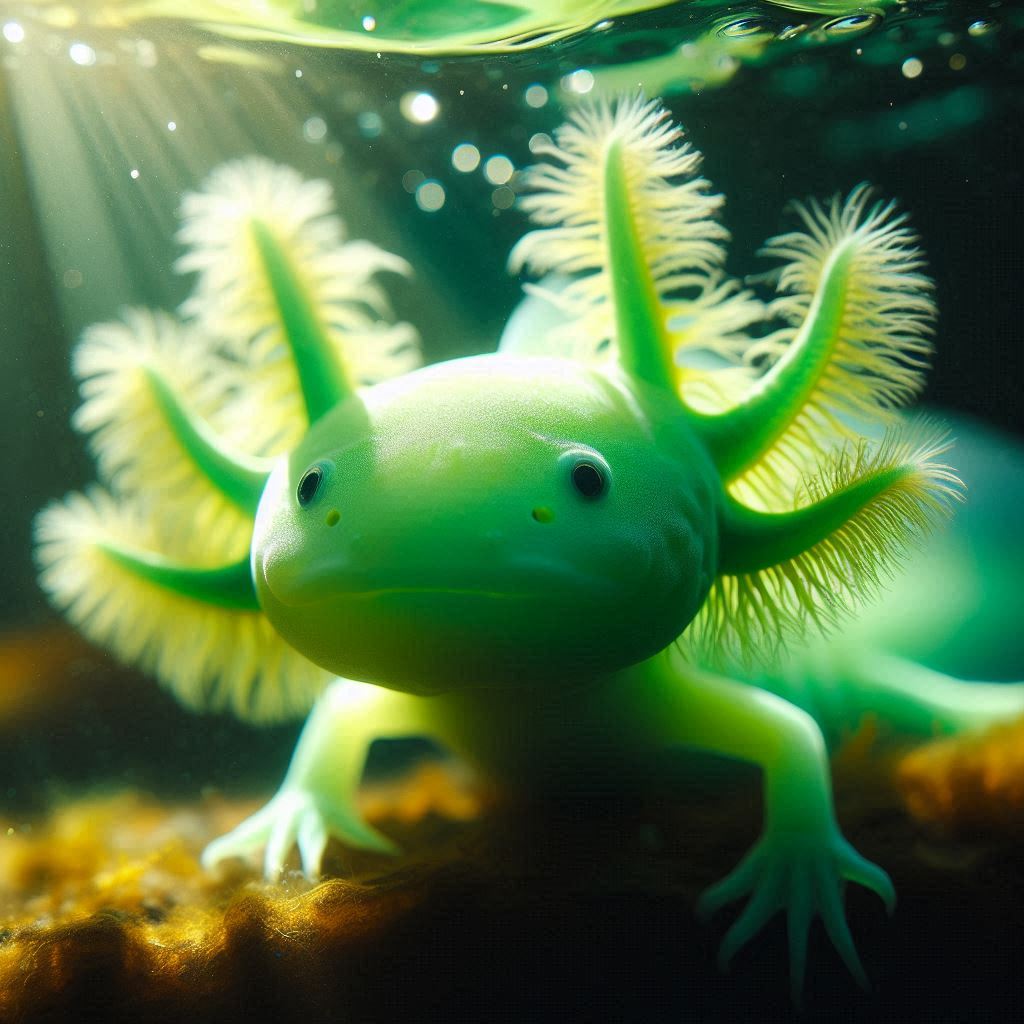
1) GFP or Axolotl Green
These axolotls have a gene known as the GFP gene, this is a genetically modified protein in their DNA that was originally
introduced in a lab setting.
Usually, any axolotl morph can be a GFP But it is the protein that allows the axolotl to glow vibrant green under UV or blue light
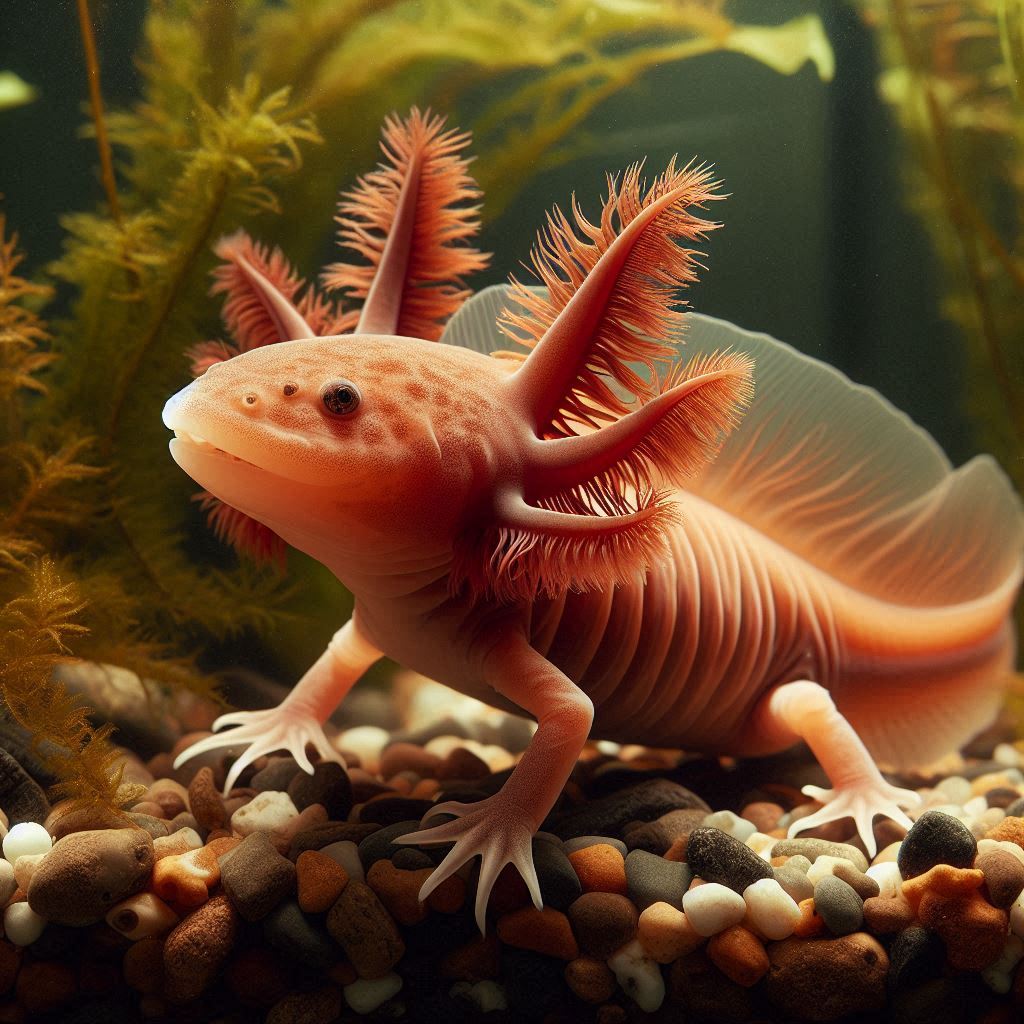
2) Copper Axolotl
The copper has the characteristic of brown spots on a copper background.
No one seems to know where exactly this color came from, nor its exact genetic makeup.
The first appearance of this strain came as a spawn from the United States.
There are a few lines of these animals, many of which do not seem to be healthy:
The animals do not grow well, often get sick, etc. In any case, another line is healthy, and our animals come from that one.
Since the color was new and very beautiful, the breeders probably raised all they could, without eliminating the puny animals that appear in all the spawns that a conscious breeder would not normally raise later separated.
Grey Gills leucistic Axolotl
This axolotl has a white or pink body color, dark navy or black eyes plus bright red gills,
Depending on the environment and genetics these axolotls may or may not develop freckles;
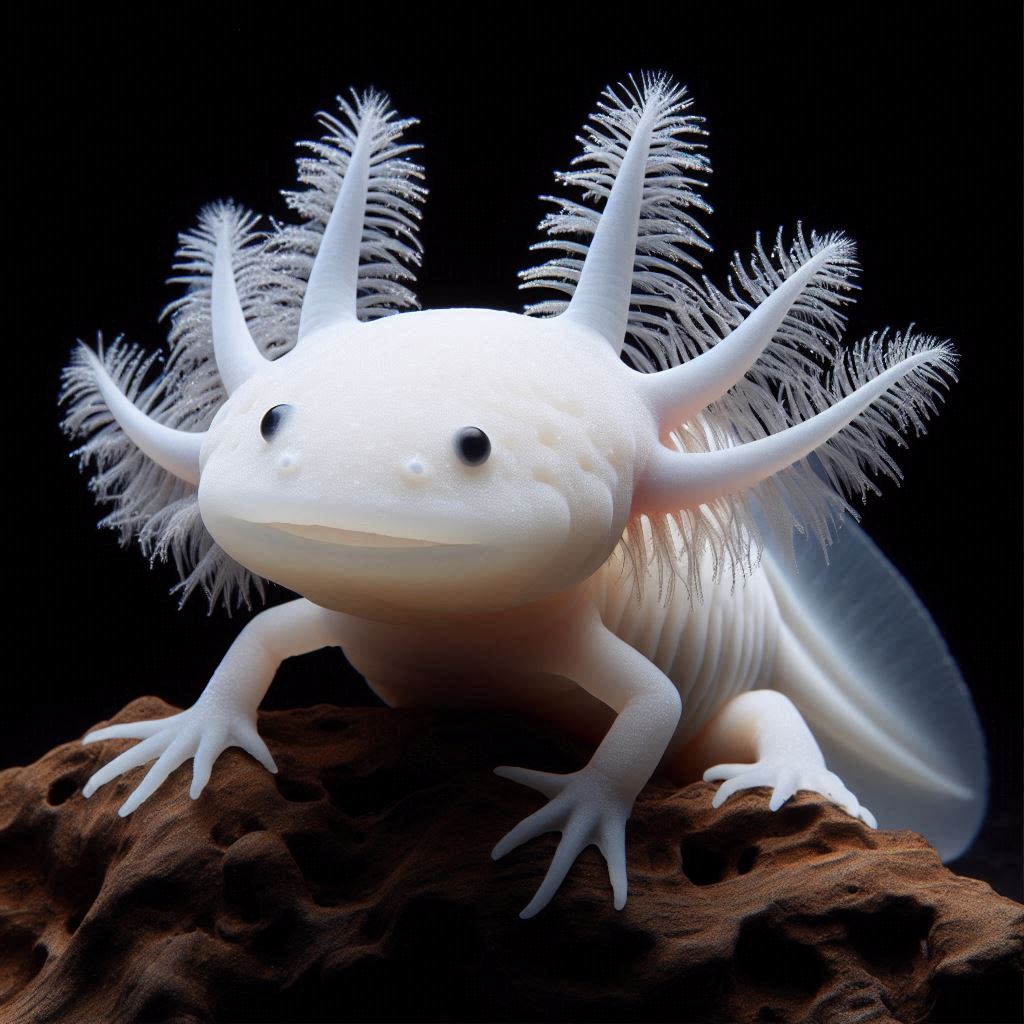
White Albino Axolotl (Xanthic)
Albino axolotl has a white or pinkish body; additionally, they have clear or red eyes and bright red gills.
These axolotls never develop any type of freckles or pigmentation on the body,
They only come in two appearances known as white and xanthic or in common language as white albinos.
Recommened tank and Sustrate Setups for Axolotls
- Coralife LED Biocube Aquarium LED
- Ideal for naturalistic terrarium type set-ups incorporating reptiles, amphibians or invertebrates
- Use it damp for tropical species as it naturally absorbs and breaks down odor and waste products
- All natural green "product"
- Increases humidity
- Aqueon Fish Aquarium Starter Kit LED, 10 Gallon
- EVERYTHING YOU NEED - Feature a compact and customizable filtration chamber that is already built-in to the back of the aquarium – easy to setup and maintain.
- GREAT FEATURES – Includes quiet submersible pump, dual intakes and adjustable return nozzle. Compatible with all existing BioCube accessories. Fish, corals, substrate and décor are sold separately.
- SLEEK and MODERN – Biocubes feature a rounded edge design and is the perfect innovative all-inclusive aquarium for all needs..
- VIBRANT LED LIGHTING - Low-profile hood contains vibrant LED lighting that is capable of sustaining and growing healthy, vibrant corals and live plants.
- MAXIMIZE BEAUTY - 24-hour timer which makes it easy to control the three independent light channels for maximum beauty: bright white, sparkling blue and color enhancing LEDs.
- Fluval Spec V Aquarium Kit 5-Gallon
- SPEC Series Aquariums: The newly redesigned SPEC series now features an impressive high output 7000K LED, which generates 20% brighter lighting performance for noticeably bolder fish colors and plant growth.
- Tank Construction: SPEC adds style and design to your aquarium set. Constructed with etched glass with high-quality aluminum trim.
- Filtration Capability: SPEC boasts a powerful 3-stage system with oversized mechanical, chemical and biological media for unparalleled water clarity. Includes foam block, activated carbon, and BioMax bio rings.
- Lighting System: The powerful LED lighting system has 37 LED bulbs with a total output of 821 lumens and 7000K color temperature.
- Capacity: 5-gallon tank capacity with a water pump output of 55-80 US Gal/h (210-300 L/h).
There you go
I hope you have learned quite a lot about axolotls and the genetics behind their colors and morphs.
If you like this one go ahead and read an interesting article about What is Albinism? (A guide to Albino Amphibians)
Interested in Buying an Axolotl here is an article about How much does Axolotl costs?+ Cost of Tank and Accessories
